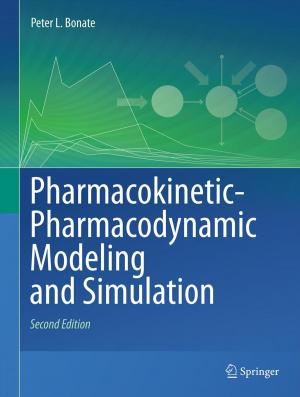Ischemic Preconditioning: The Concept of Endogenous Cardioprotection
Nonfiction, Health & Well Being, Medical, Specialties, Internal Medicine, Cardiology, General| Author: | ISBN: | 9781461526025 | |
| Publisher: | Springer US | Publication: | December 6, 2012 |
| Imprint: | Springer | Language: | English |
| Author: | |
| ISBN: | 9781461526025 |
| Publisher: | Springer US |
| Publication: | December 6, 2012 |
| Imprint: | Springer |
| Language: | English |
Ischemic Preconditioning: The Concept of Endogenous Cardioprotection consolidates, in one volume, both current knowledge and the most recent advances in ischemic preconditioning. The editors have invited investigators at the forefront of ongoing research to provide their scholarly and candid comments concerning each of these issues. This volume includes a comprehensive review of infarct size reduction with ischemic preconditioning, and the most recent data on the effects of preconditioning on ischemia and reperfusion-induced arrhythmias, myocardial metabolism, contractile function, and the coronary vasculature. The role of altered energy metabolism, stress-induced proteins, ATP-sensitive potassium channels, and adenosine -- the major hypotheses that have been proposed to explain the cardioprotective effects of ischemic preconditioning -- are critically reviewed by investigators who have been instrumental in developing these concepts. In addition, the editors raise the intriguing possibility that ischemic preconditioning may be more than simply a laboratory curiosity. Using a multidisciplinary approach, this volume challenges the readers to contribute their own expertise to address the unanswered questions concerning this endogenous, cardioprotective phenomenon.
Ischemic Preconditioning: The Concept of Endogenous Cardioprotection consolidates, in one volume, both current knowledge and the most recent advances in ischemic preconditioning. The editors have invited investigators at the forefront of ongoing research to provide their scholarly and candid comments concerning each of these issues. This volume includes a comprehensive review of infarct size reduction with ischemic preconditioning, and the most recent data on the effects of preconditioning on ischemia and reperfusion-induced arrhythmias, myocardial metabolism, contractile function, and the coronary vasculature. The role of altered energy metabolism, stress-induced proteins, ATP-sensitive potassium channels, and adenosine -- the major hypotheses that have been proposed to explain the cardioprotective effects of ischemic preconditioning -- are critically reviewed by investigators who have been instrumental in developing these concepts. In addition, the editors raise the intriguing possibility that ischemic preconditioning may be more than simply a laboratory curiosity. Using a multidisciplinary approach, this volume challenges the readers to contribute their own expertise to address the unanswered questions concerning this endogenous, cardioprotective phenomenon.















